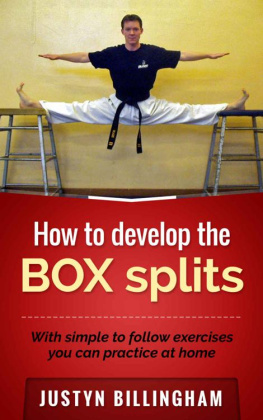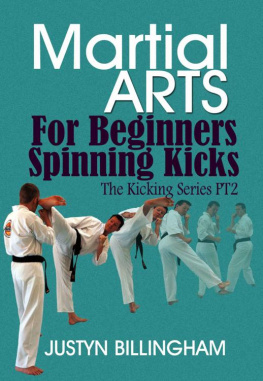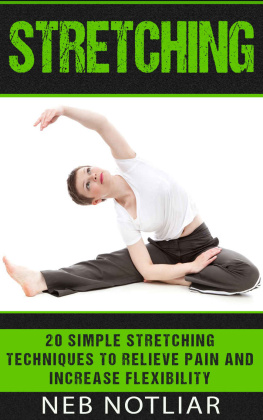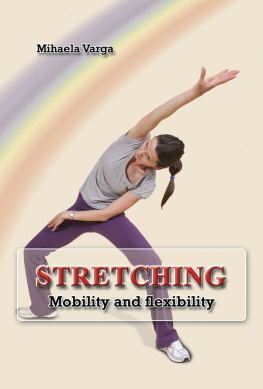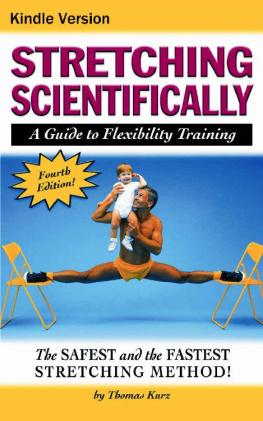How to Develop the BOX splits
By Justyn Billingham
Dedicated to all my students
Copyright 2015 Justyn Billingham
All Rights Reserved. No part of this publication may be reproduced or transmitted in any form or by any means, electronic or mechanical without permission in writing from the author.
Disclaimer
Please note that the author of this book is not responsible in any manner whatsoever for any damage or injury of any kind that may result from practicing, or applying , the principles, ideas, techniques and/or following the instructions/information described in this book. Since the physical activities in this book may be to strenuous in nature for some readers to engage in safely, it is essential that a doctor be consulted before undertaking training
Contents
Introduction
The Principles of Stretching
Stretching Methods
Stretching Routines
Introduction.
"How do I develop the BOX splits?" is probably the question I'm asked all of the time and my answer is always the same.
"By Persevering!"
You see, anything in life worth achieving (notice I said achieving and not obtaining ) involves effort and that effort involves time and whenever there's time involved, there has to be perseverance .
The problem is when something takes a long time to achieve, people get bored, de-motivated and frustrated.
And then they give up.
Take weight loss as a great example.
We all know someone on a diet .
It's quite possible we know someone on a permanent diet.
However they never really seem to be eating all that healthily at least not all of the time -- and so there's the problem.
Because weight loss is a slow process , most people lose motivation and just give up, only to then put a few pounds back on, get depressed and start all over again.
And so the circle continues.
Stretching is the same.
It's a (very) slow process but it's even slower if you only do it just once a week.
In order to develop your flexibility to any reasonable level you need to be stretching regularly .
But how regularly is regularly?
I once read a book that said you should stretch EVERY THREE HOURS.
Of course this isn't possible for the majority of us so I would suggest every other day as a minimum (and remember, this is just for those of you that want to see a decent amount of improvement.
If you're happy with things the way they are then just carry on as you are.
When I tell people this their first objection is that they don't have time .
Neither did I but funnily enough, I did manage to find time to watch TV , read magazines and play video games (I was a teenager don't forget).
When I finally decided that I was going to achieve the box splits I started stretching every night.
This may be too much for some people but let me tell you how I made it easier and consequently more achievable.
Instead of sitting on the sofa and watching the TV I would sit on the floor, watch the TV and stretch .
Instead of sitting on the sofa and reading a magazine I would sit on the floor, read the magazine and stretch.
Instead of sitting on the sofa and playing video games I would sit on the floor, play video games and stretch.
You get the idea.
I would combine just five minutes of stretching with waiting for the adverts to finish .
Then when they came back on again I'd stretch some more.
My main focus was the split style stretches and I would sit in a fully locked out stretch at my maximum position for as long as I could.
Then I would get up, have a walk around and stretch again.
It probably took a few months but then, all of a sudden, I started to see the results in a big way.
Then the motivation kicked in and stretching became my new religion.
But not like I used to do in my martial art classes.
Why?
Because we didnt really have the time in class to stretch properly as developing your flexibility is completely different to stretching your legs out so you don't pull a muscle when kicking.
People ask me about the warm up .
Make sure you read this next bit carefully before strapping on a pair of roller skates and jumping off the top stair .
Anyone studying yoga will know that you don't spend 20 minutes running around the room doing push ups, crunches and burpees in order to warm up.
Instead the home stretching routines contained in this book can be broken into three key stages .
1. A very gentle stretch that you can just about feel -- hold for a period of ten seconds, then rest for as long as you feel you need (but not too long).
2. Another very gentle stretch that you take a little further and can hold for ten seconds and then rest as above.
3. A third stretch where you start to actually stretch the muscle with a series of gentle extension movements and then a slight relax before stretching again.
NOT BOUNCING -- DEFINITELY NOT BOUNCING!
Static stretching, which is the style of stretching were going to focus on in this book, is completely safe and providing you follow the instructions exactly you will greatly reduce the risk of injury (as you can never rule it out completely).
As you will see, the book contains six very simple stretching routines.
My advice for a super quick, interim solution to your stretching would be to focus on them as follows:
Parts 1 & 2 -- in their entirety.
Part 4 -- in its entirety.
Part 6 -- in its entirety .
My advice is to do the same if you want to stretch but only have around five minutes spare as I found it was this final stretch (part 6) that gave me the greatest result.
BUT.
You do need the others parts to fully complement your total stretching otherwise it would be like lifting weights but only ever doing biceps.
Just be aware that this is how I developed my flexibility (and Im the one on the front cover of this book doing the suspended BOX splits -- so it clearly works!).
Other people may well have different views on stretching.
Try everything and then do what works for YOU.
BUT, only ever take advice from someone that can actually do it themselves .
I'd never learn to drive by studying with someone that hadn't passed their test, no matter how good they said they were.
The Principles of Stretching
As with a good warm up routine prior to exercise, stretching also forms an essential part of any sport or physical activity.
Having good upper body movement is definitely essential however, due to the huge part that the legs play in most sports, particularly martial arts, gymnastics or dancing, flexibility of the lower body is also of the utmost importance.
In order to become more flexible you need to build and develop muscles in the legs that are rarely used in everyday activities.
These muscles and the tendons that surround them then need to be lengthened and stretched in order to increase their overall flexibility and movement.
This in turn will improve the range of motion of the joints, allowing for greater overall ability and speed of movement all round.
Anyone that fails to warm up and stretch properly prior to engaging in any physical activity runs the risk of straining and tearing muscles and ligaments that could result in long term or even permanent damage.
There have been many books and articles written on the subject of stretching and flexibility and attitudes towards the way we stretch today have changed over the years.
At one time it was considered good practice to bounce when you performed leg stretching exercises (Ballistic Stretching) as this helped the tendons to elongate at a much faster pace.
However, after much research and investigation on the subject, this is now considered to be a dangerous way to stretch and can result in some serious, if not permanent damage.

